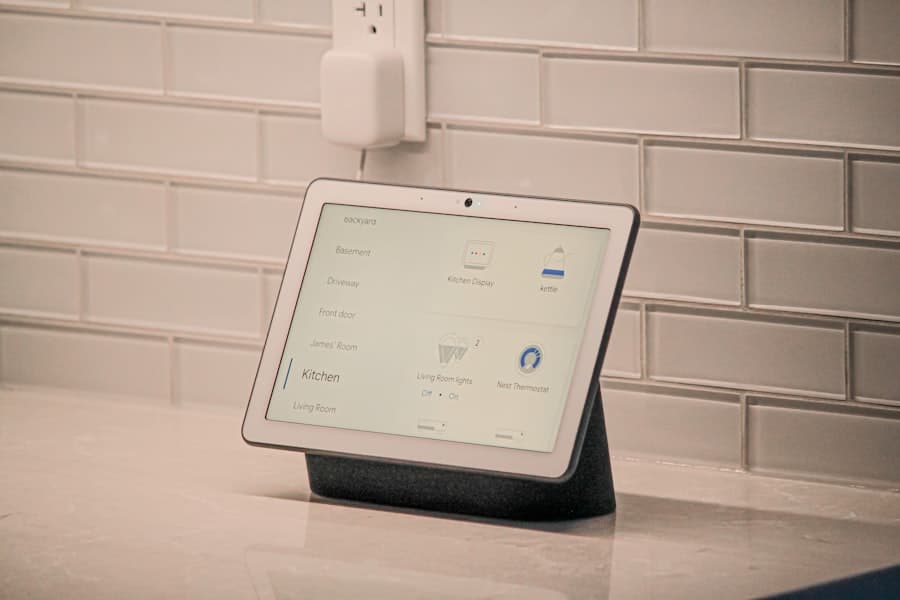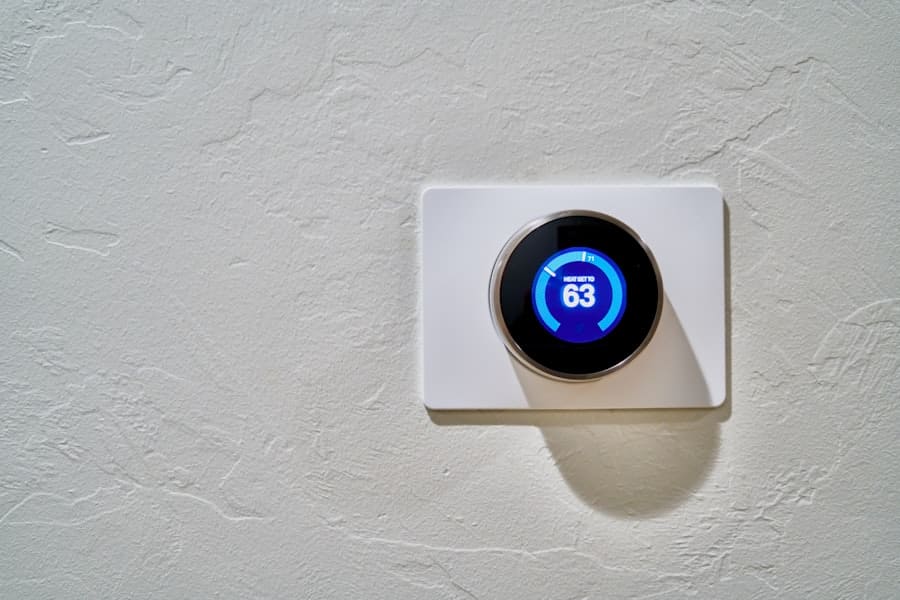The Internet of Things (IoT) has emerged as a transformative force across various sectors, revolutionizing how devices communicate, operate, and are maintained. At its core, IoT refers to the interconnection of everyday objects to the internet, enabling them to send and receive data. This connectivity has profound implications for appliance diagnostics and repair, allowing for real-time monitoring and analysis of appliance performance.
As appliances become increasingly sophisticated, the need for efficient diagnostic tools has never been more critical. Remote appliance diagnostics leverages IoT technology to facilitate proactive maintenance, reduce downtime, and enhance user experience. The integration of IoT into appliance diagnostics is not merely a technological advancement; it represents a paradigm shift in how consumers and service providers interact with household devices.
Traditional methods of diagnosing appliance issues often involve manual inspections and reactive repairs, which can be time-consuming and costly. In contrast, IoT-enabled appliances can self-monitor their performance, alerting users and technicians to potential issues before they escalate into significant problems. This proactive approach not only saves time and money but also enhances the overall reliability of appliances in homes and businesses.
Key Takeaways
- IoT enables remote monitoring and diagnosis of appliances, revolutionizing the way appliance diagnostics and repairs are conducted.
- The benefits of IoT in remote appliance diagnostics include improved efficiency, reduced downtime, and cost savings for both consumers and service providers.
- IoT technology allows for predictive maintenance of appliances, helping to identify and address issues before they become major problems.
- Implementing IoT for remote appliance diagnostics comes with challenges such as data security, interoperability, and the need for skilled technicians.
- Successful case studies demonstrate the effectiveness of IoT in remote appliance diagnostics, showcasing its potential to transform the appliance repair industry.
The Benefits of IoT in Remote Appliance Diagnostics and Repair
Real-Time Monitoring and Anomaly Detection
Appliances equipped with IoT sensors can continuously track their operational parameters, such as temperature, energy consumption, and performance metrics. This data can be transmitted to cloud-based platforms where it can be analyzed for anomalies or deviations from normal operating conditions.
Enhanced Efficiency in Repair Processes
When an appliance malfunctions, technicians can access diagnostic data remotely, allowing them to understand the issue before arriving on-site. This pre-diagnosis capability means that service calls can be more targeted and effective, reducing the time spent troubleshooting on location.
Improved Customer Satisfaction and Resource Allocation
This not only improves customer satisfaction but also optimizes resource allocation for service providers. With IoT technology, appliances can be repaired more efficiently, reducing waste and improving overall customer experience.
How IoT Technology Enables Remote Monitoring and Diagnosis of Appliances

IoT technology facilitates remote monitoring through a network of interconnected devices that communicate via the internet. Each appliance is equipped with sensors that collect data on various operational parameters. This data is then transmitted to a central server or cloud platform where it can be analyzed using advanced algorithms.
For instance, smart thermostats can monitor temperature fluctuations and user preferences, adjusting settings automatically to optimize energy efficiency. Similarly, smart ovens can track cooking times and temperatures, providing users with notifications when their meals are ready. The diagnostic capabilities of IoT extend beyond mere monitoring; they also encompass predictive analytics.
By analyzing historical data trends, IoT systems can identify patterns that may indicate impending failures. For example, if a dishwasher consistently shows increased water usage over time, it may signal a developing leak or malfunction in the water inlet valve.
This proactive approach not only enhances appliance longevity but also contributes to energy savings and reduced operational costs.
The Role of IoT in Predictive Maintenance for Appliances
Predictive maintenance is one of the most compelling applications of IoT technology in the realm of appliance diagnostics. Unlike traditional maintenance strategies that rely on scheduled servicing or reactive repairs after a failure occurs, predictive maintenance uses real-time data to forecast when an appliance is likely to require attention. This approach minimizes unplanned downtime and extends the lifespan of appliances by addressing issues before they escalate into major problems.
For instance, consider a commercial HVAC system equipped with IoT sensors that monitor airflow, temperature differentials, and energy consumption. By analyzing this data over time, the system can predict when components such as filters or compressors are nearing the end of their operational life. This allows facility managers to schedule maintenance during off-peak hours, ensuring that the system remains operational while minimizing disruption to business activities.
The financial implications are significant; businesses can save on emergency repair costs and improve overall operational efficiency by adopting a predictive maintenance strategy.
Overcoming Challenges in Implementing IoT for Remote Appliance Diagnostics
Despite the numerous advantages of IoT in remote appliance diagnostics, several challenges must be addressed for successful implementation. One primary concern is data security. As appliances become more connected, they also become more vulnerable to cyber threats.
Ensuring that sensitive user data is protected from unauthorized access is paramount. Manufacturers must invest in robust cybersecurity measures, including encryption protocols and regular software updates, to safeguard against potential breaches. Another challenge lies in standardization across different manufacturers and devices.
The lack of universal protocols can lead to compatibility issues between various appliances and diagnostic systems. For instance, a smart washing machine from one brand may not seamlessly integrate with a diagnostic platform designed for another brand’s appliances. To overcome this hurdle, industry stakeholders must collaborate to establish common standards that facilitate interoperability among devices.
This collaboration will not only enhance user experience but also foster innovation within the IoT ecosystem.
Case Studies: Successful Implementation of IoT for Remote Appliance Diagnostics

Several companies have successfully harnessed IoT technology for remote appliance diagnostics, showcasing its potential across various applications. One notable example is Whirlpool’s use of smart appliances equipped with Wi-Fi connectivity. These appliances allow users to monitor their performance through a mobile app, receiving alerts about maintenance needs or operational issues.
In one case study, a Whirlpool washing machine was able to detect an imbalance during a spin cycle and automatically adjust its settings to prevent damage. This capability not only improved the appliance’s longevity but also enhanced user satisfaction by minimizing disruptions. Another compelling case study involves GE Appliances’ use of predictive analytics in their smart refrigerators.
By analyzing usage patterns and sensor data, GE’s refrigerators can notify users when certain components are likely to fail or require maintenance. In one instance, a user received an alert about a potential issue with the ice maker’s water supply line based on historical data trends. The user was able to address the issue proactively by scheduling a service appointment before experiencing any inconvenience.
Such implementations illustrate how IoT technology can lead to more efficient operations and improved customer experiences.
The Future of IoT in Remote Appliance Diagnostics and Repair
The future of IoT in remote appliance diagnostics appears promising as technology continues to evolve at an unprecedented pace. With advancements in artificial intelligence (AI) and machine learning (ML), diagnostic systems will become even more sophisticated in analyzing data patterns and predicting failures. These technologies will enable appliances to learn from user behavior over time, further enhancing their ability to self-diagnose issues and optimize performance.
Moreover, as 5G networks become more widespread, the speed and reliability of data transmission will significantly improve. This enhanced connectivity will allow for real-time monitoring and diagnostics without latency issues that could hinder timely interventions. As a result, service providers will be able to respond more quickly to alerts generated by appliances, further reducing downtime and improving customer satisfaction.
The Impact of IoT on the Appliance Repair Industry
The integration of IoT technology into remote appliance diagnostics is reshaping the landscape of the appliance repair industry. By enabling real-time monitoring, predictive maintenance, and efficient repair processes, IoT has transformed how consumers interact with their appliances and how service providers deliver support. As challenges such as data security and standardization are addressed through collaborative efforts within the industry, the potential for innovation will continue to expand.
Ultimately, the impact of IoT on appliance diagnostics extends beyond mere convenience; it fosters a culture of proactive maintenance that enhances appliance longevity while reducing costs for both consumers and service providers alike. As we move forward into an increasingly connected world, the role of IoT in shaping the future of appliance repair will undoubtedly grow more significant, paving the way for smarter homes and more efficient service solutions.
A related article to “The Role of IoT in Enabling Remote Appliance Diagnostics and Repair” is “What Trends Are Predicted for 2023” which discusses the upcoming trends in technology and how they will impact various industries. To learn more about the trends predicted for 2023, you can check out the article here.
FAQs
What is IoT?
IoT stands for the Internet of Things, which refers to the network of physical devices, vehicles, home appliances, and other items embedded with electronics, software, sensors, actuators, and connectivity which enables these things to connect and exchange data.
How does IoT enable remote appliance diagnostics and repair?
IoT enables remote appliance diagnostics and repair by allowing appliances to be connected to the internet and transmit data about their performance and any issues they may be experiencing. This data can then be used by technicians to diagnose problems remotely and even make repairs without needing to physically be present.
What are the benefits of using IoT for remote appliance diagnostics and repair?
Some benefits of using IoT for remote appliance diagnostics and repair include faster and more accurate diagnostics, reduced downtime for appliances, cost savings on repairs, and the ability to proactively address potential issues before they become major problems.
What types of appliances can benefit from IoT-enabled remote diagnostics and repair?
A wide range of appliances can benefit from IoT-enabled remote diagnostics and repair, including refrigerators, washing machines, dishwashers, HVAC systems, and more. Essentially, any appliance that can be connected to the internet and transmit data about its performance can benefit from this technology.
Are there any security concerns with using IoT for remote appliance diagnostics and repair?
There are potential security concerns with using IoT for remote appliance diagnostics and repair, as connecting appliances to the internet can make them vulnerable to hacking and other cyber threats. However, these concerns can be mitigated through the use of secure communication protocols and encryption.

